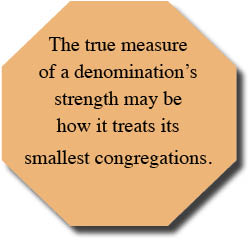![]() 2×2 is an experimental site in a fairly new medium, so we are learning along with everyone else. A recent real life lesson is teaching us the difference between “comments” as a way to interact vs actually posting contact information.
2×2 is an experimental site in a fairly new medium, so we are learning along with everyone else. A recent real life lesson is teaching us the difference between “comments” as a way to interact vs actually posting contact information.
2×2 was launched in February of 2011. It is built on a blogging platform, so comments have always been possible. We had not included obvious phone numbers or emails. We thought the comment mechanism was the way interested people would reach us.
Our overall goal is to create helpful dialog on issues which affect small church ministry but are not often discussed. How that happens is up to our readers! While we have always invited comments, “getting comments” has never been a goal as it is among many bloggers.
We have followed analytics on our site since about June and we knew that we were getting many international “hits.” We had no way to measure whether or not they were quality hits or accidental surfing hits.
About a week ago, a reader wrote to us via a comment asking for contact information. We immediately responded by posting a contact name and number in the sidebar. We have been in regular communication since. We have begun to hear from others as well — not on the site — but via email and telephone.
Our emails are proving that we do, indeed, have a national and international following that is beginning to put us in direct contact with ministries we would have never known about years ago.
This morning we had a detailed email from a ministry in Pakistan, thanking us for our web site. The pastor sent us links to their ministry site and asked for our prayers.
Was it coincidence that a 2×2/Redeemer member suggested last week that the 2×2 web site begin to include a prayer list? Probably not.
2×2 is a place for sharing about ministry and we will always be glad to feature ministry news that will benefit the labors of other small Christian communities. We will consider linking to any ministry that sends us information to verify their ministry efforts.
And, of course, we will add your ministry to our soon to be published prayer list.
Lesson to be learned: Comments are nice, but communication is better!


